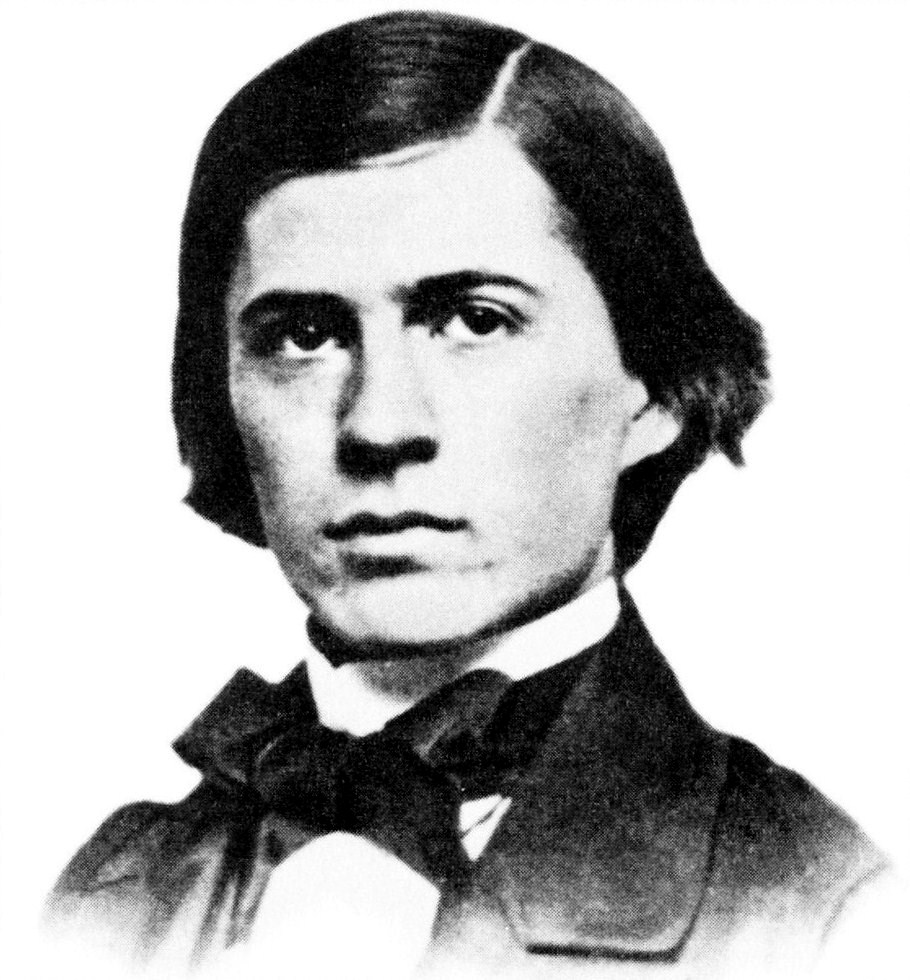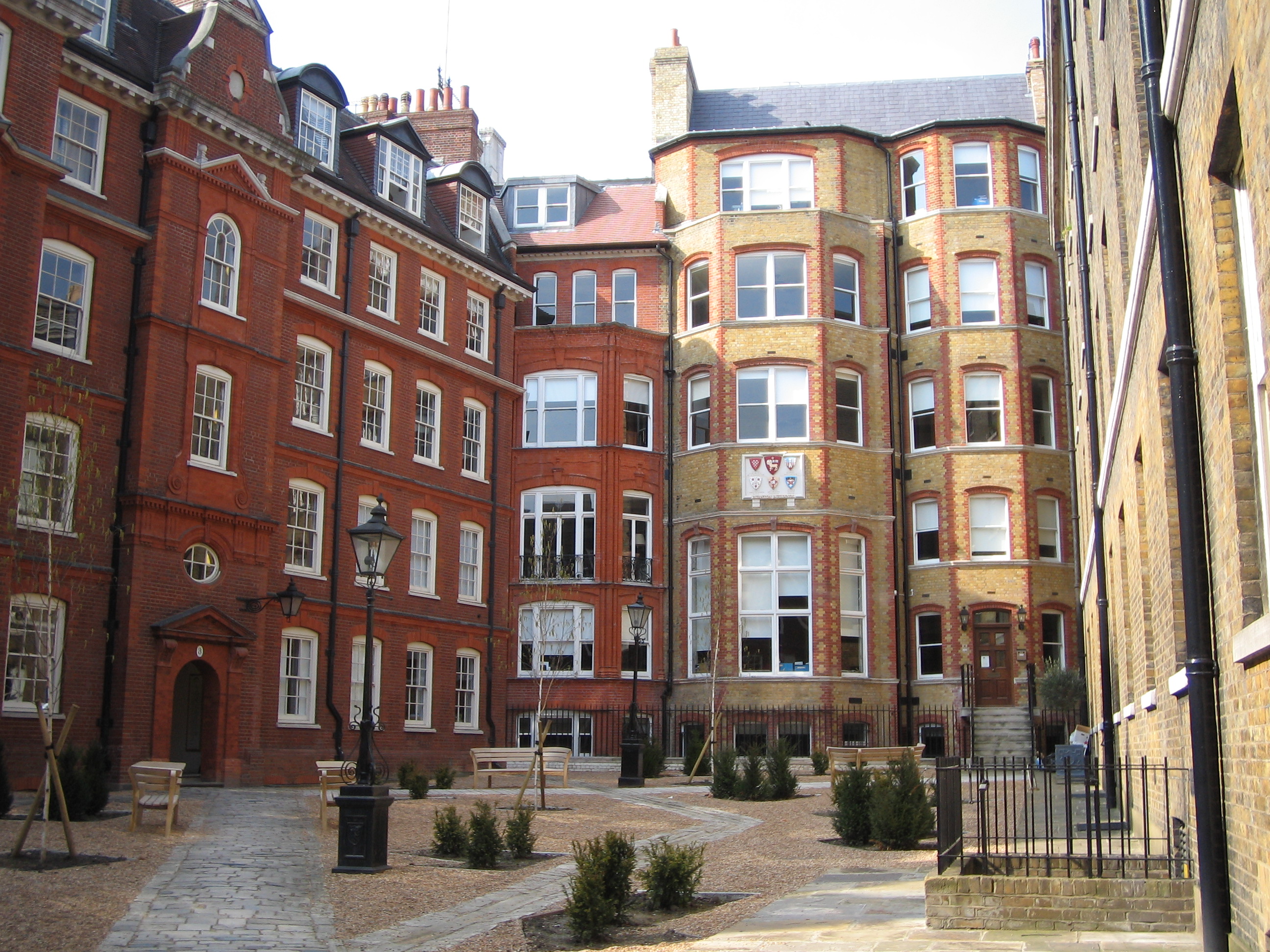|
Alfred Kempe
Sir Alfred Bray Kempe FRS (6 July 1849 – 21 April 1922) was a mathematician best known for his work on linkages and the four colour theorem. Biography Kempe was the son of the Rector of St James's Church, Piccadilly, the Rev. John Edward Kempe. Among his brothers were Sir John Arrow Kempe and Harry Robert Kempe. He was educated at St Paul's School, London and then studied at Trinity College, Cambridge, where Arthur Cayley was one of his teachers. He graduated BA (22nd wrangler) in 1872. Despite his interest in mathematics he became a barrister, specialising in the ecclesiastical law. He was knighted in 1913, the same year he became the Chancellor for the Diocese of London. He was also Chancellor of the dioceses of Newcastle, Southwell, St Albans, Peterborough, Chichester, and Chelmsford. He received the honorary degree DCL from the University of Durham and he was elected a Bencher of the Inner Temple in 1909. In 1876 he published his article ''On a General Met ... [...More Info...] [...Related Items...] OR: [Wikipedia] [Google] [Baidu] |
Kensington
Kensington is an area of London in the Royal Borough of Kensington and Chelsea, around west of Central London. The district's commercial heart is Kensington High Street, running on an east–west axis. The north-east is taken up by Kensington Gardens, containing the Albert Memorial, the Serpentine Gallery and John Hanning Speke, Speke's monument. South Kensington and Gloucester Road, London, Gloucester Road are home to Imperial College London, the Royal College of Music, the Royal Albert Hall, Natural History Museum, London, Natural History Museum, Victoria and Albert Museum, and Science Museum, London, Science Museum. The area is also home to many embassies and consulates. Name The Manorialism, manor of ''Chenesitone'' is listed in the Domesday Book of 1086, which in the Old English language, Anglo-Saxon language means "Chenesi's List of generic forms in place names in Ireland and the United Kingdom, ton" (homestead/settlement). One early spelling is ''Kesyngton'', as wri ... [...More Info...] [...Related Items...] OR: [Wikipedia] [Google] [Baidu] |
Chancellor (ecclesiastical)
Chancellor is an ecclesiastical title used by several quite distinct officials of some Christian churches. In some churches, the chancellor of a diocese is a lawyer who represents the church in legal matters. Catholic Church In the Catholic Church a chancellor is the chief record-keeper of a diocese or eparchy or their equivalent. Normally a priest, sometimes a deacon or layperson, the chancellor keeps the official archives of the diocese, as a notary certifies documents, and generally manages the administrative offices (and sometimes finances and personnel) of a diocese. They may be assisted by vice-chancellors. Though they manage the paperwork and office (called the " chancery"), they have no actual jurisdictional authority: the bishop of the diocese exercises decision-making authority through his judicial vicar, in judicial matters, and the vicar general for administrative matters. Church of England In the Church of England, the Chancellor is the judge of the consistory co ... [...More Info...] [...Related Items...] OR: [Wikipedia] [Google] [Baidu] |
Multiset
In mathematics, a multiset (or bag, or mset) is a modification of the concept of a set that, unlike a set, allows for multiple instances for each of its elements. The number of instances given for each element is called the ''multiplicity'' of that element in the multiset. As a consequence, an infinite number of multisets exist that contain only elements and , but vary in the multiplicities of their elements: * The set contains only elements and , each having multiplicity 1 when is seen as a multiset. * In the multiset , the element has multiplicity 2, and has multiplicity 1. * In the multiset , and both have multiplicity 3. These objects are all different when viewed as multisets, although they are the same set, since they all consist of the same elements. As with sets, and in contrast to ''tuples'', the order in which elements are listed does not matter in discriminating multisets, so and denote the same multiset. To distinguish between sets and multisets, a notat ... [...More Info...] [...Related Items...] OR: [Wikipedia] [Google] [Baidu] |
Charles Sanders Peirce
Charles Sanders Peirce ( ; September 10, 1839 – April 19, 1914) was an American scientist, mathematician, logician, and philosopher who is sometimes known as "the father of pragmatism". According to philosopher Paul Weiss (philosopher), Paul Weiss, Peirce was "the most original and versatile of America's philosophers and America's greatest logician". Bertrand Russell wrote "he was one of the most original minds of the later nineteenth century and certainly the greatest American thinker ever". Educated as a chemist and employed as a scientist for thirty years, Peirce meanwhile made major contributions to logic, such as theories of Algebraic logic, relations and Quantifier (logic), quantification. Clarence Irving Lewis, C. I. Lewis wrote, "The contributions of C. S. Peirce to symbolic logic are more numerous and varied than those of any other writer—at least in the nineteenth century." For Peirce, logic also encompassed much of what is now called epistemology and the philoso ... [...More Info...] [...Related Items...] OR: [Wikipedia] [Google] [Baidu] |
Percy Heawood
Percy John Heawood (8 September 1861 – 24 January 1955) was a British mathematician, who concentrated on graph colouring. Life He was the son of the Rev. John Richard Heawood of Newport, Shropshire, and his wife Emily Heath, daughter of the Rev. Joseph Heath of Wigmore, Herefordshire; and a first cousin of Oliver Lodge, whose mother Grace was also a daughter of Joseph Heath. He was educated at Queen Elizabeth's School, Ipswich, and matriculated at Exeter College, Oxford in 1880, graduating B.A. in 1883 and M.A. in 1887. Heawood spent his academic career at Durham University, where he was appointed Lecturer in 1885. He was, successively, Censor of St Cuthbert's Society between 1897 and 1901 succeeding Frank Byron Jevons in the role, Senior Proctor of the university from 1901, Professor in 1910 and Vice-Chancellor between 1926 and 1928. He was awarded an OBE, as Honorary Secretary of the Preservation Fund, for his part in raising £120,000 to prevent Durham Castle from coll ... [...More Info...] [...Related Items...] OR: [Wikipedia] [Google] [Baidu] |
Straight Line Linkage
A straight-line mechanism is a Mechanism (engineering), mechanism that converts any type of rotary or angular motion to perfect or near-perfect straight-line motion, or ''vice versa''. Straight-line motion is linear motion of definite length or "stroke", every forward stroke being followed by a return stroke, giving reciprocating motion. The first such mechanism, patented in 1784 by James Watt, produced approximate straight-line motion, referred to by Watt as Watt's linkage, parallel motion. Straight-line mechanisms are used in a variety of applications, such as engines, vehicle suspensions, walking robots, and rover wheels. History In the late eighteenth century, before the development of the Planer (metalworking), planer and the milling machine, it was extremely difficult to machine straight, flat surfaces. During that era, much thought was given to the problem of attaining a straight-line motion, as this would allow the flat surfaces to be machined. To find a solution ... [...More Info...] [...Related Items...] OR: [Wikipedia] [Google] [Baidu] |
Mathematical Proof
A mathematical proof is a deductive reasoning, deductive Argument-deduction-proof distinctions, argument for a Proposition, mathematical statement, showing that the stated assumptions logically guarantee the conclusion. The argument may use other previously established statements, such as theorems; but every proof can, in principle, be constructed using only certain basic or original assumptions known as axioms, along with the accepted rules of inference. Proofs are examples of exhaustive deductive reasoning that establish logical certainty, to be distinguished from empirical evidence, empirical arguments or non-exhaustive inductive reasoning that establish "reasonable expectation". Presenting many cases in which the statement holds is not enough for a proof, which must demonstrate that the statement is true in ''all'' possible cases. A proposition that has not been proved but is believed to be true is known as a conjecture, or a hypothesis if frequently used as an assumption for ... [...More Info...] [...Related Items...] OR: [Wikipedia] [Google] [Baidu] |
Algebraic Curve
In mathematics, an affine algebraic plane curve is the zero set of a polynomial in two variables. A projective algebraic plane curve is the zero set in a projective plane of a homogeneous polynomial in three variables. An affine algebraic plane curve can be completed in a projective algebraic plane curve by homogenization of a polynomial, homogenizing its defining polynomial. Conversely, a projective algebraic plane curve of homogeneous equation can be restricted to the affine algebraic plane curve of equation . These two operations are each inverse function, inverse to the other; therefore, the phrase algebraic plane curve is often used without specifying explicitly whether it is the affine or the projective case that is considered. If the defining polynomial of a plane algebraic curve is irreducible polynomial, irreducible, then one has an ''irreducible plane algebraic curve''. Otherwise, the algebraic curve is the union of one or several irreducible curves, called its ''Irreduc ... [...More Info...] [...Related Items...] OR: [Wikipedia] [Google] [Baidu] |
Plane Curve
In mathematics, a plane curve is a curve in a plane that may be a Euclidean plane, an affine plane or a projective plane. The most frequently studied cases are smooth plane curves (including piecewise smooth plane curves), and algebraic plane curves. Plane curves also include the Jordan curves (curves that enclose a region of the plane but need not be smooth) and the graphs of continuous functions. Symbolic representation A plane curve can often be represented in Cartesian coordinates by an implicit equation of the form f(x,y)=0 for some specific function ''f''. If this equation can be solved explicitly for ''y'' or ''x'' – that is, rewritten as y=g(x) or x=h(y) for specific function ''g'' or ''h'' – then this provides an alternative, explicit, form of the representation. A plane curve can also often be represented in Cartesian coordinates by a parametric equation of the form (x,y)=(x(t), y(t)) for specific functions x(t) and y(t). Plane curves can sometimes also be repr ... [...More Info...] [...Related Items...] OR: [Wikipedia] [Google] [Baidu] |
Inner Temple
The Honourable Society of the Inner Temple, commonly known as the Inner Temple, is one of the four Inns of Court and is a professional association for barristers and judges. To be called to the Bar and practice as a barrister in England and Wales, a person must belong to one of these Inns. It is located in the wider Temple (London), Temple area, near the Royal Courts of Justice, and within the City of London. As a Liberty (division), liberty, it functions largely as an independent local government authority. The Inn is a professional body that provides legal training, selection, and regulation for members. It is ruled by a governing council called "Parliament", made up of the Masters of the Bench (or "Benchers"), and led by the Treasurer#In the Inns of Court, Treasurer, who is elected to serve a one-year term. The Temple takes its name from the Knights Templar, who originally (until their abolition in 1312) leased the land to the Temple's inhabitants (Templars). The Inner Templ ... [...More Info...] [...Related Items...] OR: [Wikipedia] [Google] [Baidu] |
Bencher
A bencher or Master of the Bench is a senior member of an Inn of Court in England and Wales or the Inns of Court in Northern Ireland, or the Honorable Society of King's Inns in Ireland. Benchers hold office for life once elected. A bencher can be elected while still a barrister (usually, but not always, King's Counsel in the UK or Senior Counsel in Ireland), in recognition of the contribution that the barrister has made to the life of the Inn or to the law. Others become benchers as a matter of course when appointed as a High Court judge. The Inn may elect non-members as honorary benchers – for example, distinguished judges and lawyers from other countries, eminent non-lawyers or (in the English Inns) members of the British Royal Family, who become known as "Royal Benchers" once elected. One member of each Inn is the Treasurer, a position which is held for one year only. While succession to the post of Treasurer was once dependent purely on seniority (or '' auncien ... [...More Info...] [...Related Items...] OR: [Wikipedia] [Google] [Baidu] |




